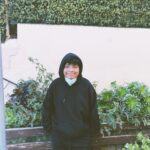Student Testimony
About 3 inches and a year ago– I spent my life getting expelled, tearing up classrooms, and getting arrested but when I got to Aseltine, I heard of the motto—“serve what you dish out.” This meant that if I was going to do something, I should expect the same in return. Actions have consequences.
I learned fast, I mean within a few months, I was working hard to get the heck out of here. And now in February, I will be dual-enrolled at Aseltine and my homeschool.
When I first got into Aseltine, I didn’t watch what I said and I didn’t care who I hurt but Aseltine has helped me to see the broad scope of my actions now I can look back and see where I was going and compare it with where I am now.
Before I was at Aseltine, I went to other non-public schools which were different in many ways but mainly they were places where I didn’t fit in. It was at these schools I learned some stupid stuff, and at one school –I felt I was in constant survival mode because everyone was looking for someone weak to pick on—this is where I had to learn to fight and not to mess with gang members.
It was at this school, I realized I didn’t want to be there so I worked hard to be able to leave—it took 17 months to get out and go to a school which I thought was better. At my next school, it was better in some ways at first but soon I realized the same thing as before-I didn’t’ fit in. I was at a school full of rich kids and I was constantly being picked on for not having money and for living in a trailer.
I couldn’t defend myself with these rich kids because if I did–I’d get kicked out. After trying hard to keep it together for a long time– I finally lost it one day and ran off campus instead of fighting-it was my only choice– I was expelled by the dean of students. I tried explaining my frustration but it was too late and I was moved to another school again. The next school I went to was with kids who were addicts—this was not a place for me—because I had to stay in one classroom, studied one subject at a time on a computer…there was no interaction with other people-I had no freedom and was told I was damaged —this was not a place for me. This is how I ended up at Aseltine.
While at Aseltine, I learned that I am not going to get anywhere if I keep acting like I used to. I try to listen better to people and try to solve a conflict instead of yelling or threatening them. I realized that life is better when you are being yourself instead of pretending to be someone you are not, like on TV.
I have earned multiple awards at Aseltine. I was part of the team who won the Basketball Championships last spring. I have won the Eagle Award two times for the highest behavior and academic scores. I have earned medals for Academic Excellence in English and History. I have also won the Collopy Award for my poetry writing.
When I look back at the last year…I realize that I found a place where I can “fit in.” More so, I found something even greater than that—I realized who I could become. I still have to work on a lot of things but I am on the right track. Now I’m headed towards public school and on my way towards earning my diploma. This is thanks to Aseltine School.
Learn more about autism
The core features of autism are areas in which difficulties can lead to feelings of frustration, confusion, anxiety or lack of control, resulting in behavioral responses. Since behavior is often a form of communication, many individuals with autism (as well as those without autism) voice their wants, needs or concerns through behaviors, rather than words. This does not mean that they are always knowingly communicating. Many behaviors are also responses to previous experiences. A baby who gets a smile when he coos, usually learns to coo more often. The same is true for challenging behaviors. If a child has learned that screaming gets him out of a difficult task, he might scream in the future to escape.A recent study of aggression in autism showed some interesting trends in terms of risk factors, which may give some insight into challenging behaviors overall. There is a much higher rate of aggression towards caregivers in autism than in the general population and in others with intellectual disabilities. The research also showed that just like in the typical population, age was a risk factor, with higher levels of aggression occurring at younger ages, which may suggest that learning and growth may help behaviors improve.
These behaviors continue on into the classroom for children with autism, and the impact can be difficult to navigate. Effective school instruction requires understanding both the strengths and weaknesses of students with autism. For example, many individuals with autism process language at a slower rate. Yet many have enhanced visual processing. Some have difficulty performing calculations, while others are mathematically gifted. The need for individualized education and curriculum for these students cannot be overstated, as it is essential to helping them progress in the classroom, as well as pick up crucial problem-solving mechanisms to help them in the real world.
https://www.autismspeaks.org/sites/default/files/section_1.pdf






Leave a Reply